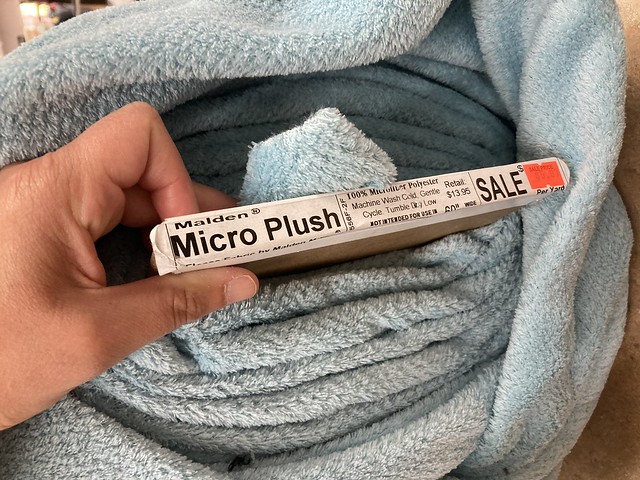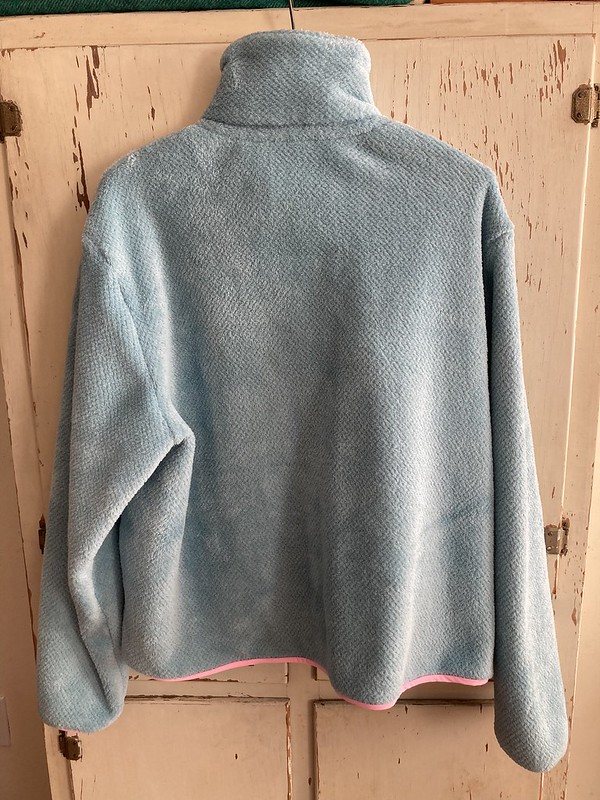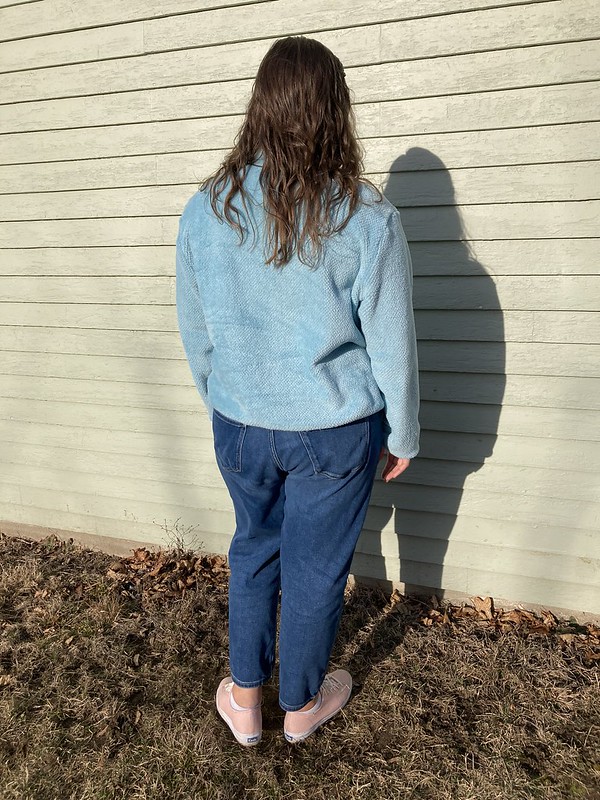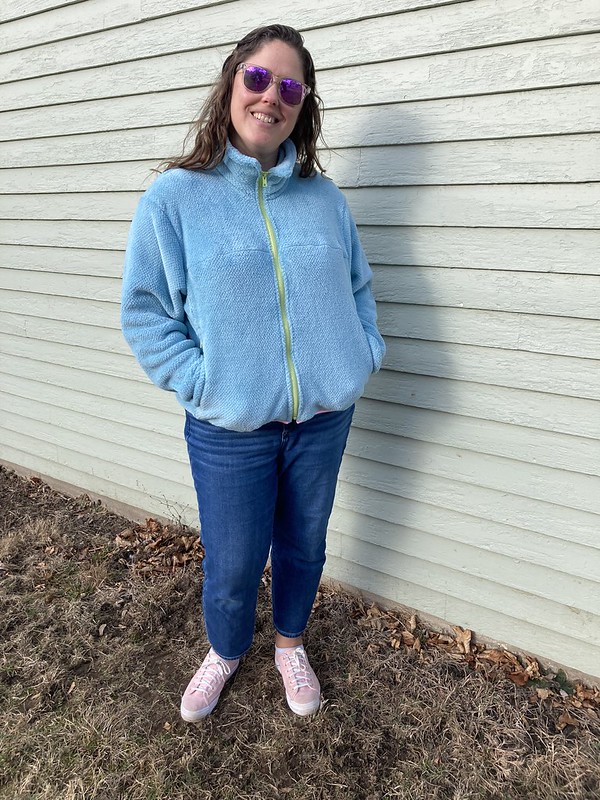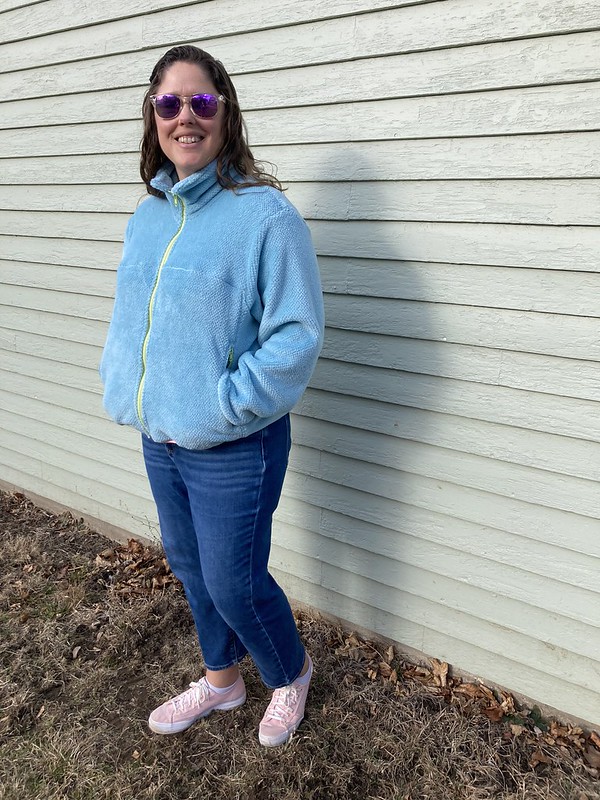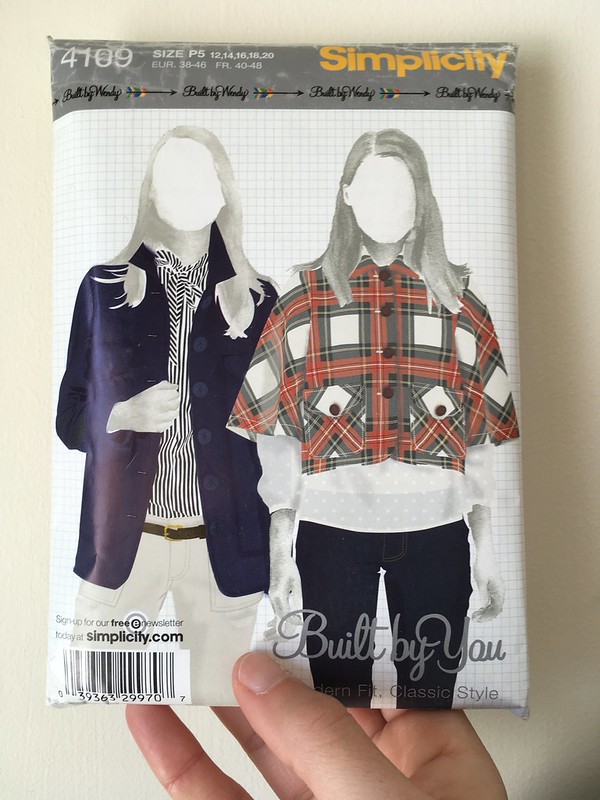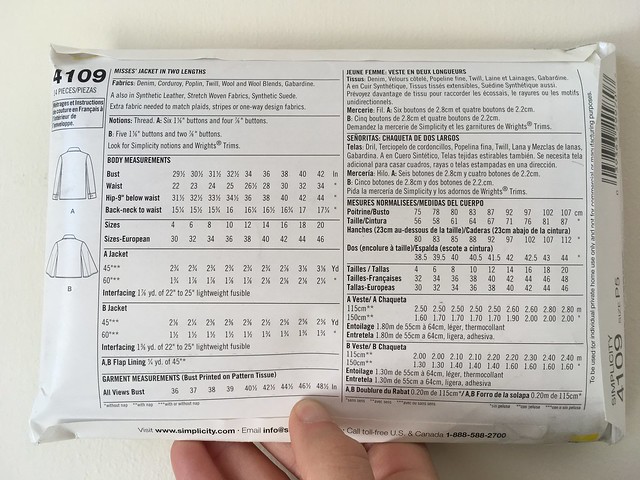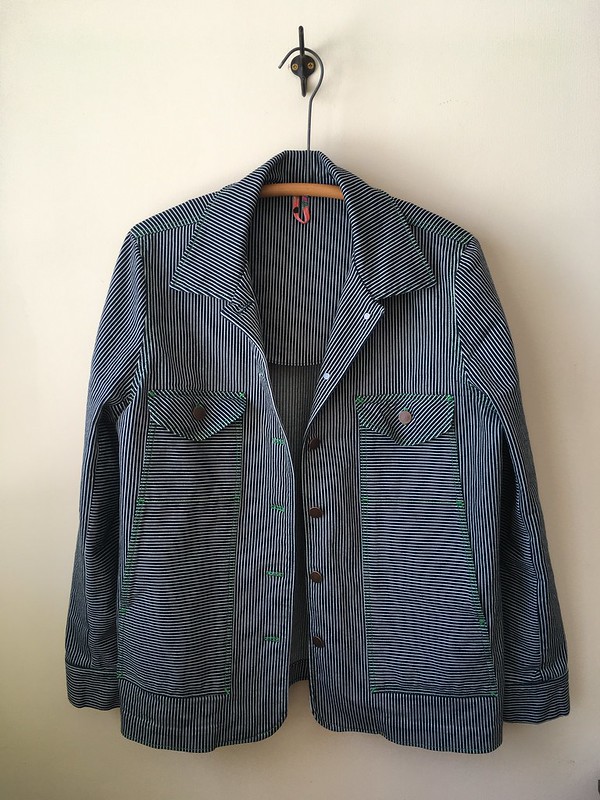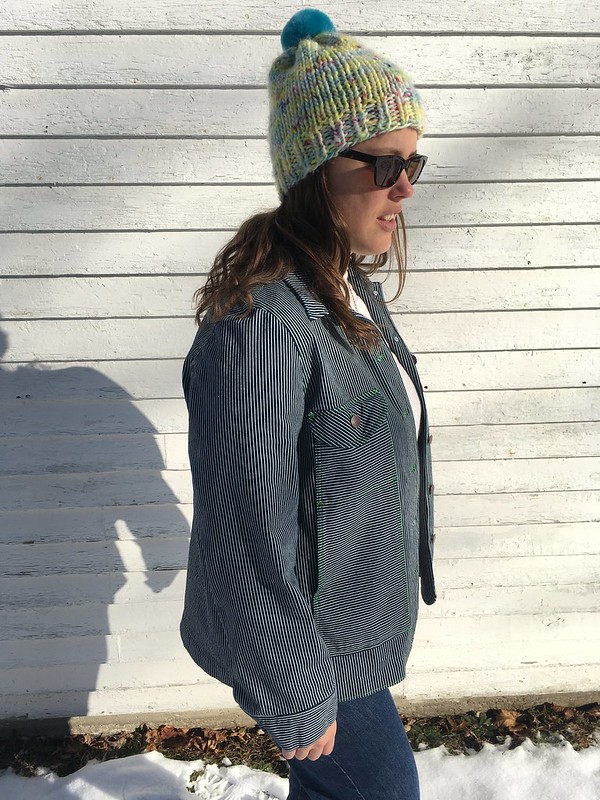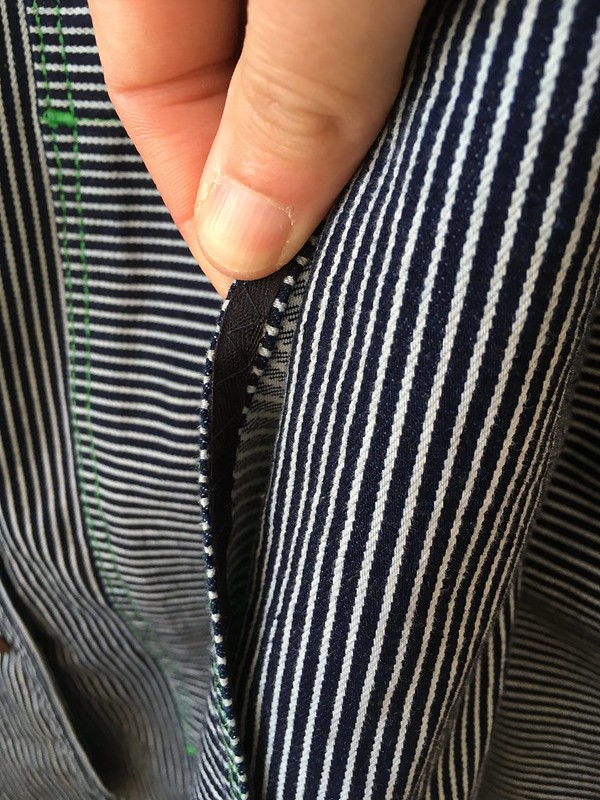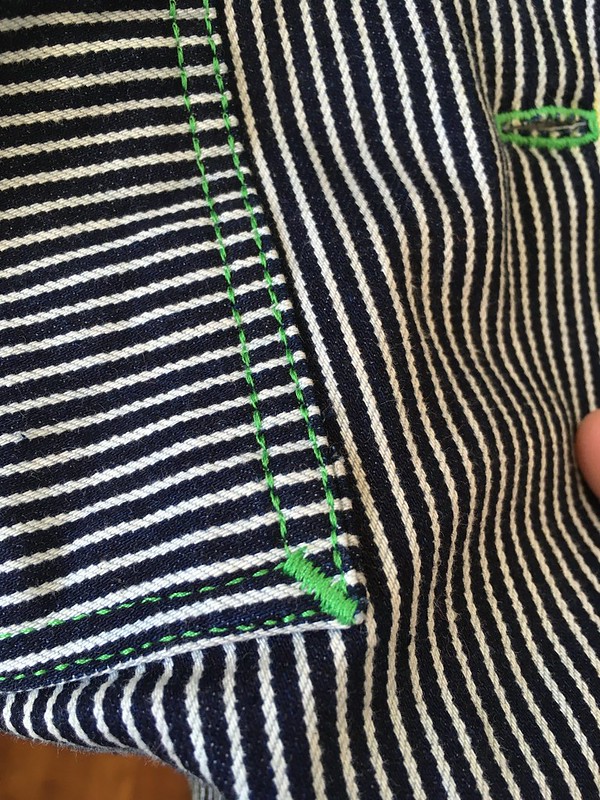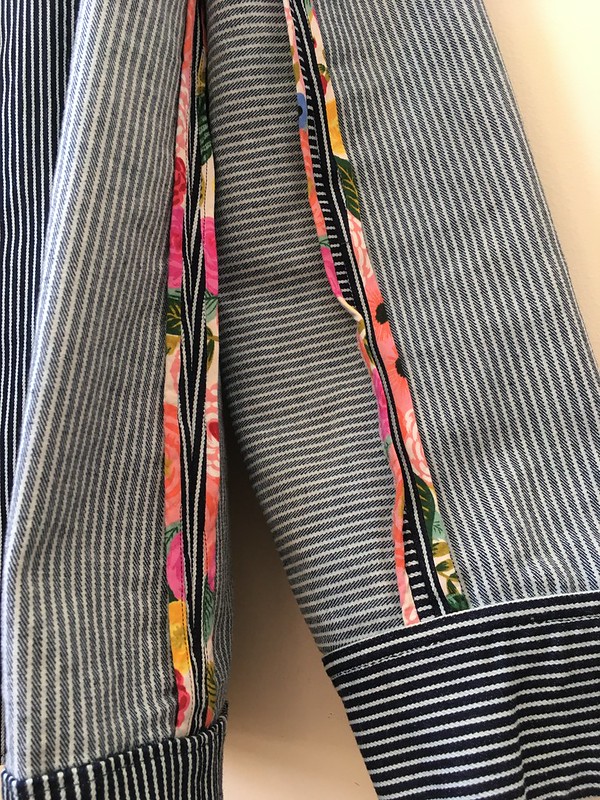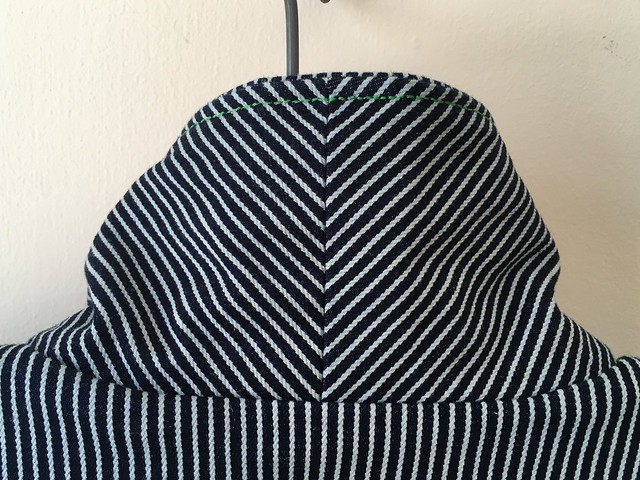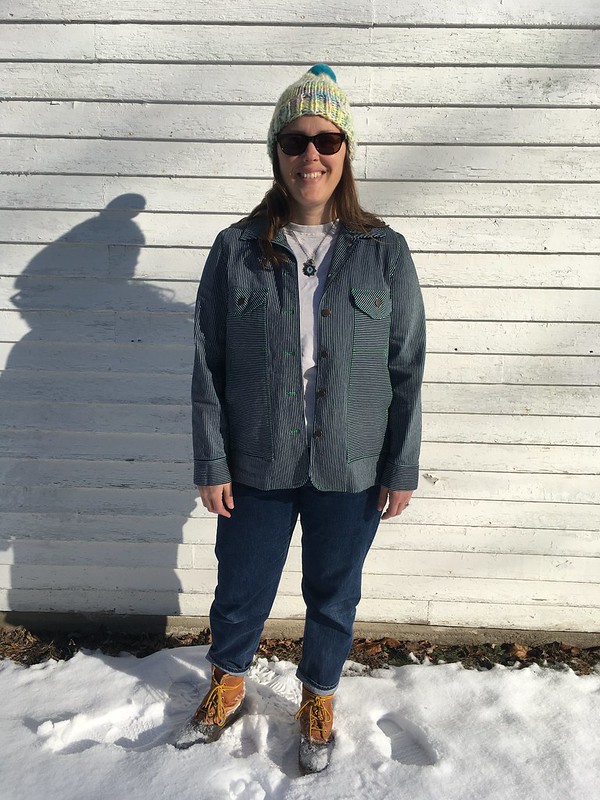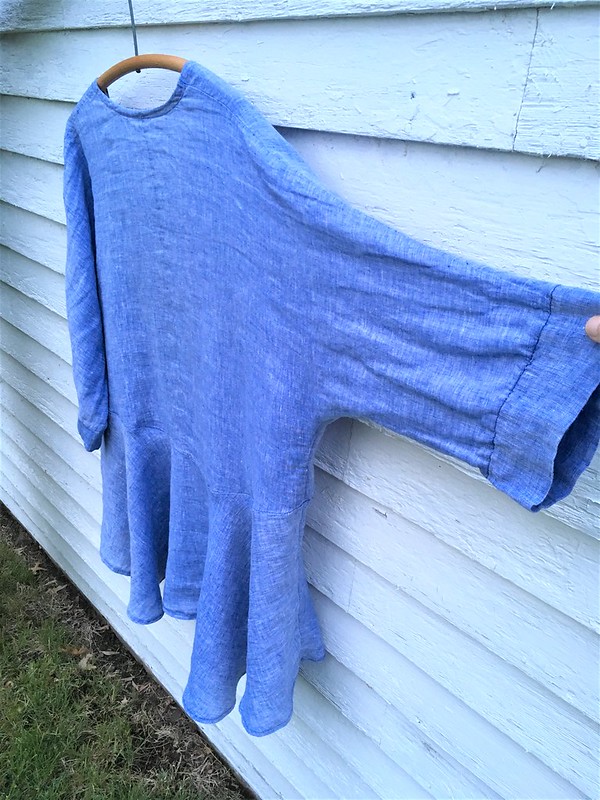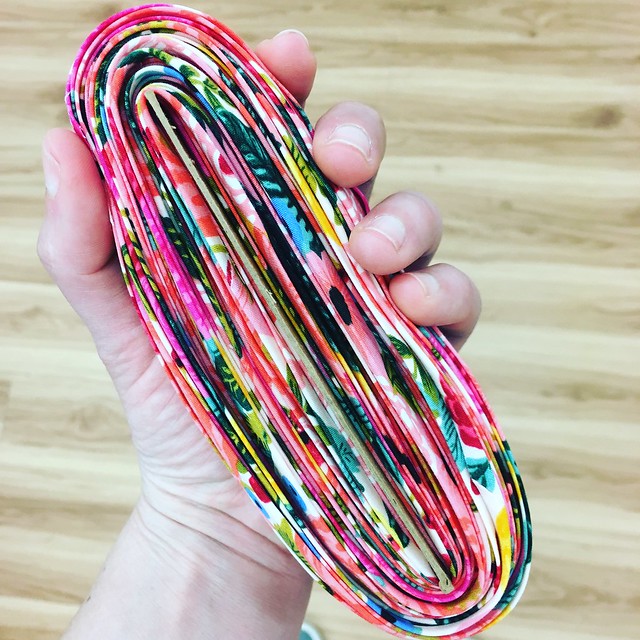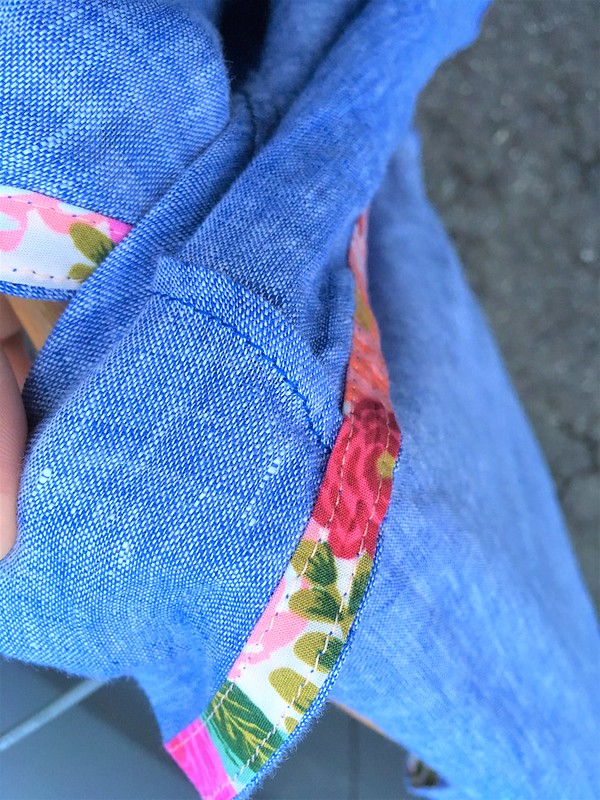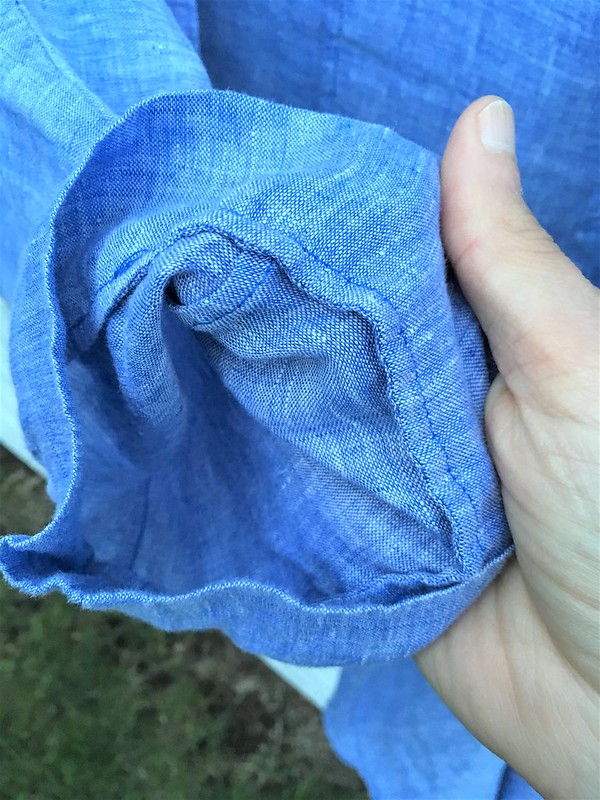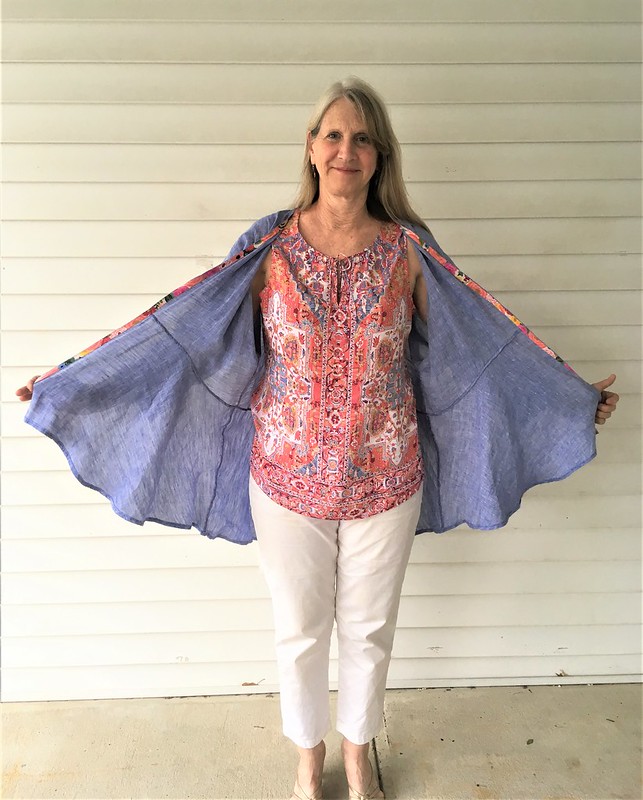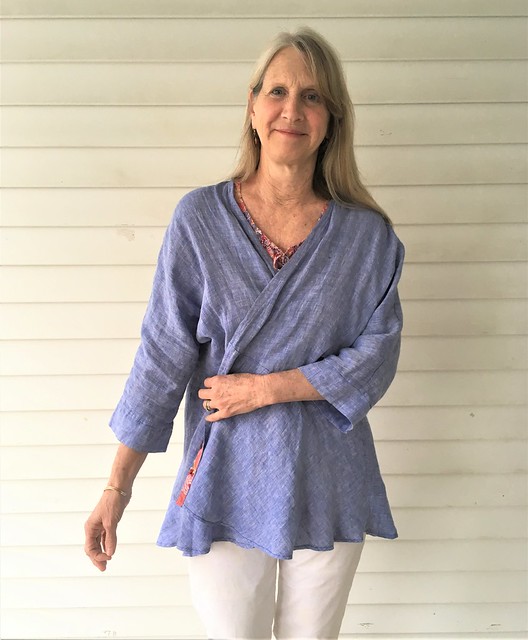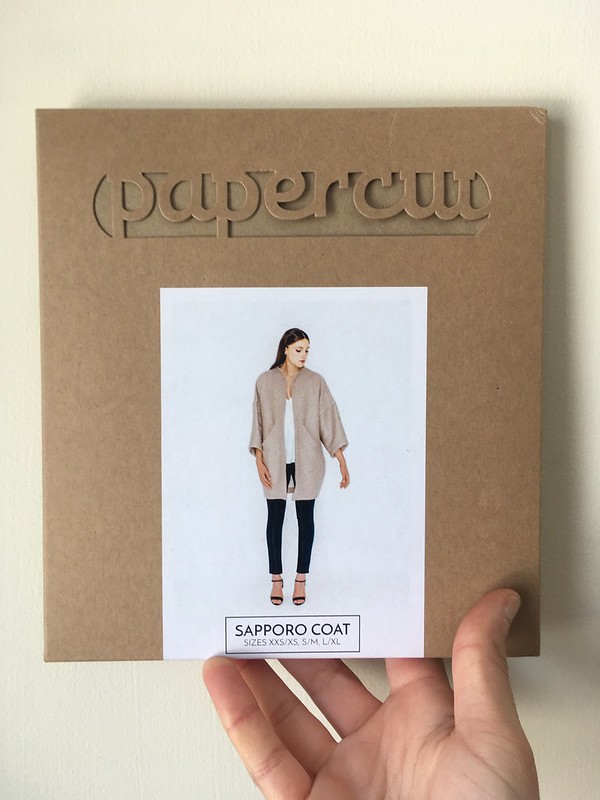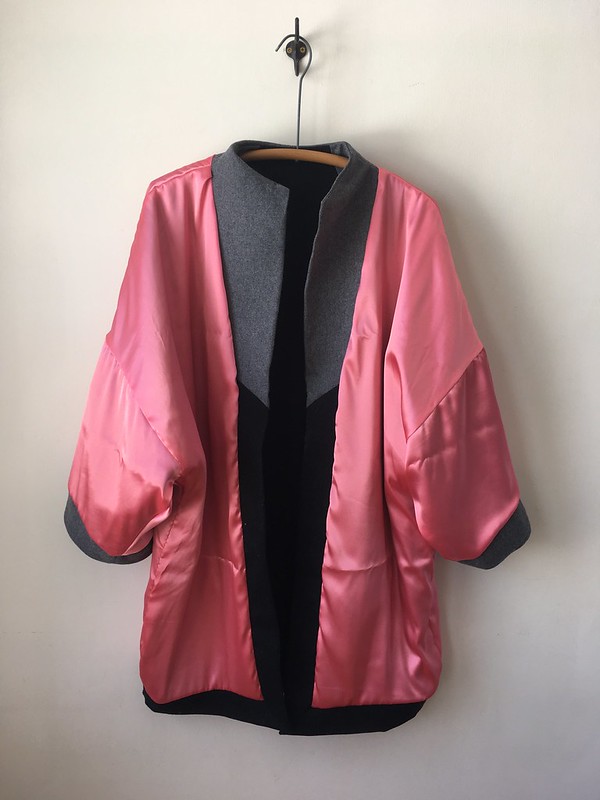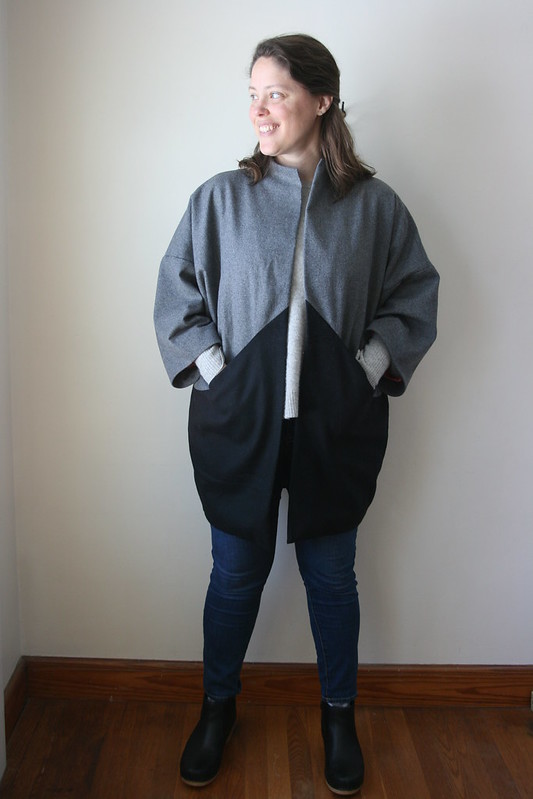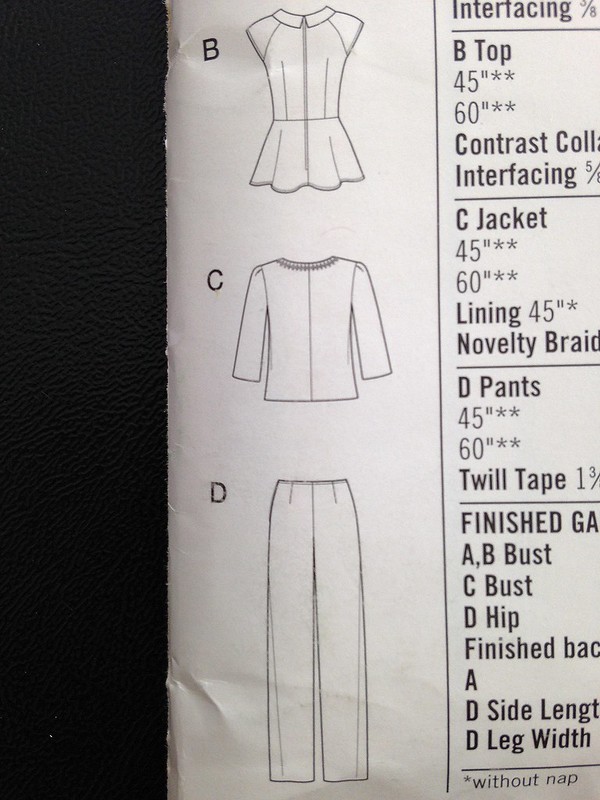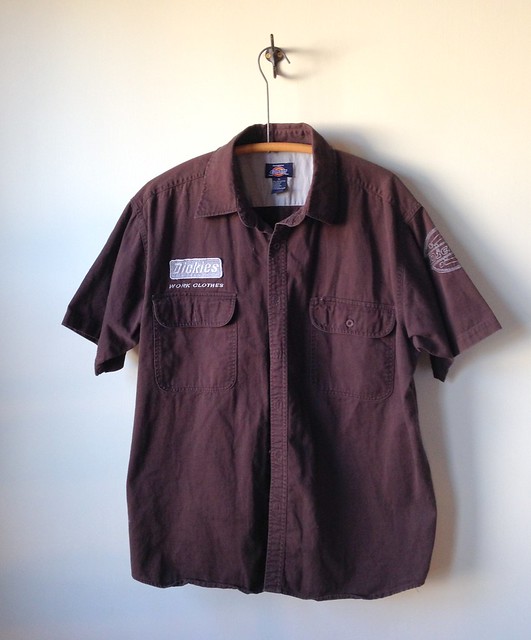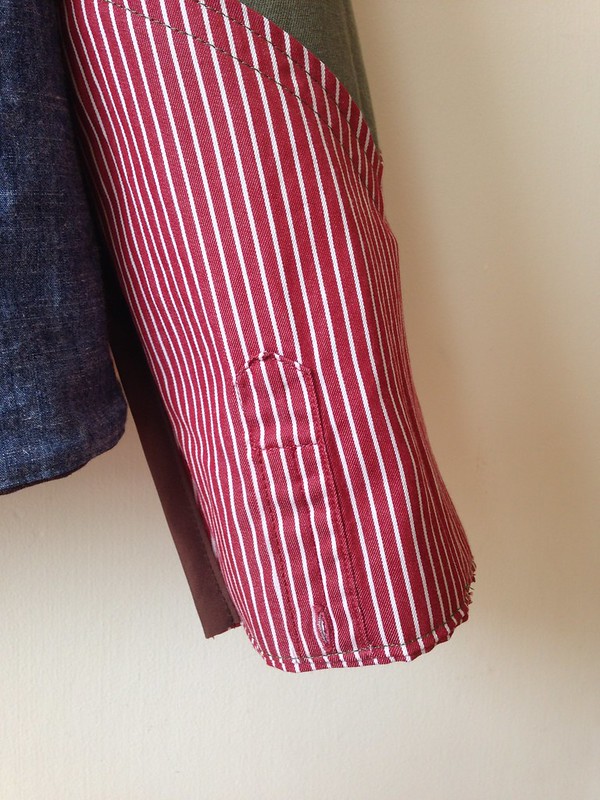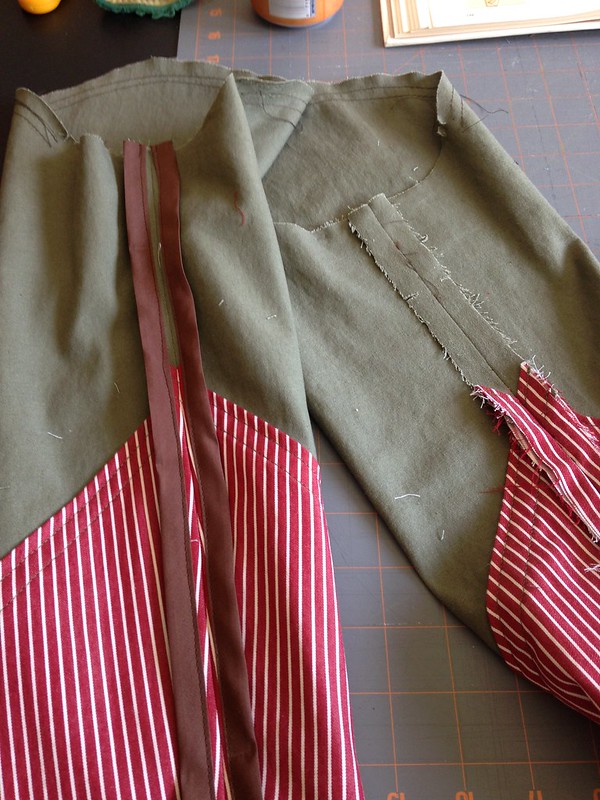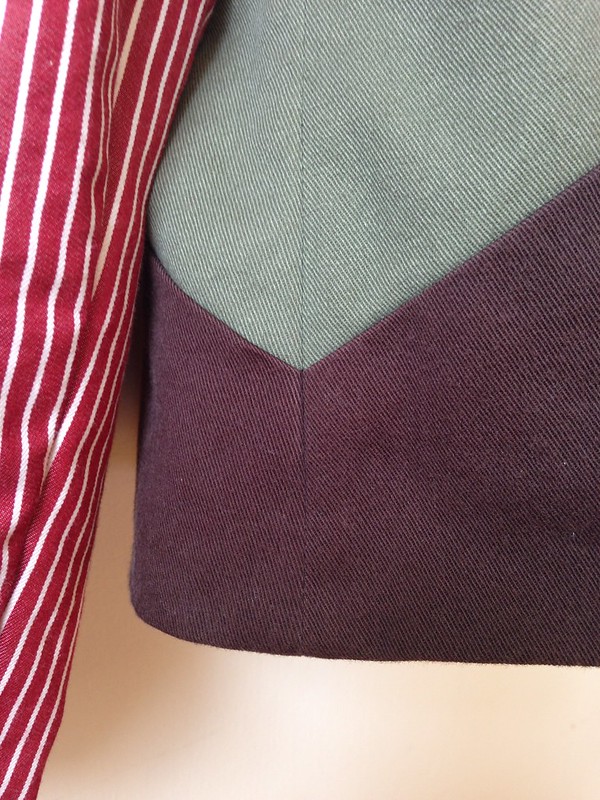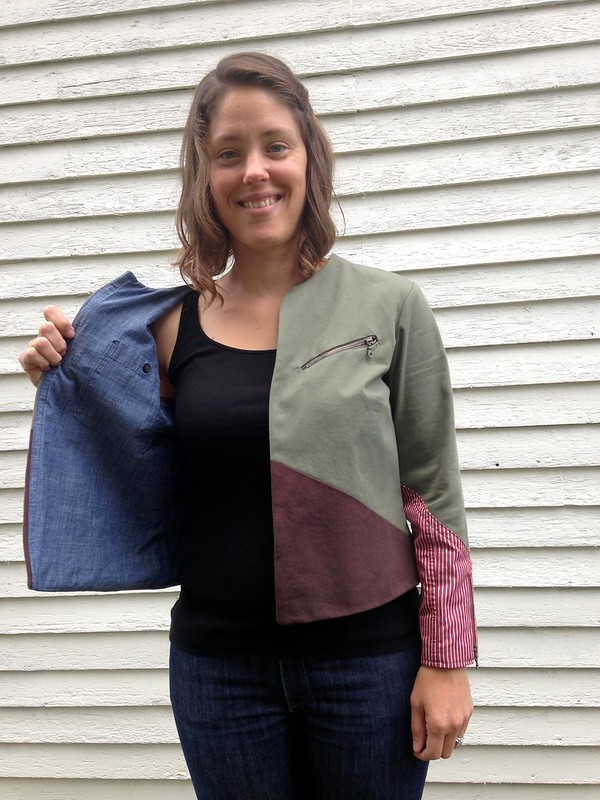
Hi! I’m back with the same pattern I talked about last week, but a different view, in a different fabric. Yep, this is The Green Pepper #507 Plush Polar Jacket in a wonderfully soft Polartec fleece from Field’s Fabrics in Holland, Michigan. Last week was all about the vest view, and this week I’m coming back older and wiser, having had a much more enjoyable sewing experience because I learned from all those pinch points on the vest. Yay!
l
I’ve felt the need for a lightweight fleece zip-up jacket for awhile. I have one from Old Navy that I thrifted, but have you ever thrifted something and then realized you might now understand why it ended up at the thrift store? Yeah, this was one of those situations. It’s a nice jacket, but the fit in the shoulders is not my favorite. Luckily, I had found some Polartec “Micro Plush” fleece at Field’s Fabrics (often labelled as Malden Mills fleece) in Holland, MI this past summer. It was a pretty sky blue, and so very soft.
Technically, I think this is a pile fabric rather than an actual fleece fabric, which is part of what makes it so soft, but either way, it is still produced by Malden Mills/Polartec, which means it has the quality that I love. Polartec produces many, many kinds of really interesting fabrics, and I love trying out different types when I get a chance. While I don’t always care about fabric brands, when it comes to fleece (and related fabrics), I tend to go for Polartec because I know the quality will be high, even in their seconds. And whenever I get a chance to go to Field’s I take a look to see what they have.
I don’t typically do the same pattern back to back, but it was a great experience doing that this time because it really helped me improve my skills and figure a few things out! Along with my notes last week on the pattern and the importance of trusting it, one thing I was surprised by is that you don’t always use a zigzag stitch when making this pattern. Sometimes a straight stitch is what you need, and the directions always tell (and/or show) you when to use each stitch. You also don’t use any interfacing–but it works! I was wondering how that would go in the zipper area in particular, but it was fine. The final product is no more or less wavy than on any store-bought fleece jacket–so trust those directions! Along those lines, I had plans to put my sleeves in flat rather than setting them in, but that really doesn’t work for this pattern, because the armscye is shaped differently than what you find on most patterns, so you’ll have to trust the directions on that, too.
l
l
One thing I did change was binding the sleeve hems as well as the jacket hem with nylon/Lycra, as I did for the vest hem in last week’s post. I cut 9″ x 2″ strips of nylon/Lycra for each sleeve hem and cut off the sleeve hem allowances. If I did it again, I would bind my sleeve hems flat before sewing the sleeve seam. I used the same nylon/Lycra swimwear fabric as on my vest and also used the same binding technique (“Lycra Wrapped Edges–The Cheater’s Way”) found in Adventures with Polarfleece: A Sewing Expedition by Nancy Cornwell. I had a few spots on the jacket hem where I didn’t catch quite enough of the fleece in my serging, so I just went back with a straight stitch and sewed a bit higher up on the jacket. It’s really important that you secure those bottom layers together because the hem is also the bottom of your pockets, and you don’t want your things falling out! This time, I also left a little nylon/Lycra hanging off the edges by the zipper, which I hand-tacked into place before doing the final sewing step.
I did all the hand-basting of the zipper and collar/facing area that I did with my vest, and it was definitely worth the time investment to have a smooth experience sewing in my front zipper and sewing on the neckline facing. My results weren’t perfect, but they were good enough that I was happy with them.
Something I wish I had done with the jacket (and maybe the vest) was to round off the corners of my collar as Nancy Cornwell suggests in her book. I think it would have looked nice.
l
l
Other than a different main fabric, I used all the same materials (with color changes for zippers and serger thread) and references for this that I did for my vest. You can find links for all those sources in last week’s post. It was great to have just made a version of this pattern so I could be smarter about when and where to serge–mainly just in the spots where I wanted an extra internal flash of color–and how to tackle all the parts I found tricky the first time around. Like last week, I wish I had some sort of little tag for the front, but otherwise, I’m really happy with this jacket. Since it’s still winter in these parts, I have worn it a lot around the house, and I really love it. I even had to fight off one of my kids who wants to steal it from me, which is a pretty high compliment in my book. 😉
I definitely recommend this pattern, but if you haven’t sewn it before, it probably wouldn’t hurt to read the two posts I have written plus any other reviews you can find on it to avoid the pitfalls I struggled with. Really, though, the sky is the limit as far as how you customize this. You can knock off your favorite Patagonia, L.L. Bean, or REI jacket, or make something no one has ever seen before! If you do, I would love to hear about it! 🙂


